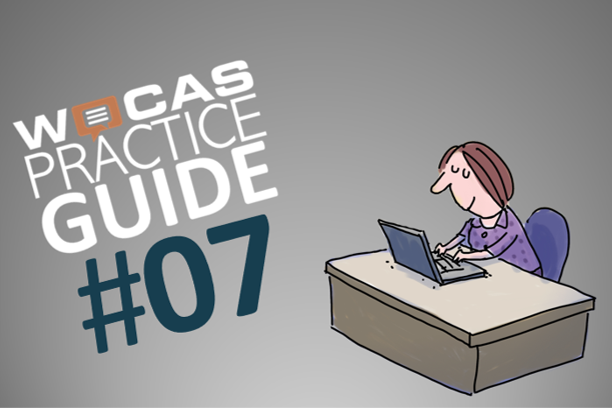
Beyond Technology: activating customers for self-service and optimizing content
Today, self-service usage rates in many companies fall far short of expectations. Our experience shows that, beyond technology issues, self-services are successful when customers are informed and motivated to use them and then effortlessly achieve relevant results.
We will show you how you can use your customer contacts to gain a deep understanding of the reasons for non-use of self services and effectively activate customers to use them. The causes of failure in self-service can also be identified at concern level. This allows you to eliminate the causes in a targeted manner and avoid follow-up contacts in the service center.
What is the problem?
Today, almost all companies offer self-services in addition to personal support from a service center. The market for self-service solution providers is difficult to keep track of and is developing rapidly. Companies have invested massively in the development of self-services, not least because of the increasing scarcity of human resources, and will continue to do so.
But the usage figures are lagging well behind the desired development. The Service Excellence Cockpit from FORWARD PARTNERS AG shows in its 2022 report that the level of self-service usage has risen from 18% in 2016 to just under 23% in 2022. The Swiss management consultancy's data is based on over 200 companies from various sectors in the DACH region.
But the potential is huge: our analyses show that in almost all sectors, over 50% of all customer contacts are located in the "blue" area (digitize contacts).
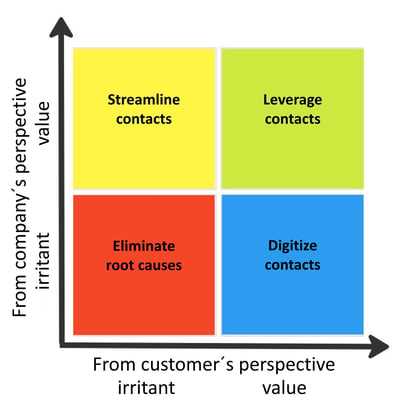
Another observation also gives cause for concern: many companies pay no further attention to self-service after its introduction. What is your situation? Do you know how many of your callers tried and failed to resolve their issue via self-service before calling? Do you know the reasons for the failure and are you continuously working on eliminating them?
To close the digital gap, two questions typically arise:
- How can you succeed in activating customers who are deliberately not using self-service today to use it in the future?
- How can structured learning be achieved from the experiences of customers who initially want to solve their problem using self-service (great!!), fail (bad!!) and then contact customer service (expensive!!)?
Effective and sustainable answers to these questions can be developed and implemented by service departments together with the departments responsible for digitalization. In the following section, we will show you how you can gain highly relevant, quantitative customer insights about your customers' self-service experience from your customer contacts and make these the basis for continuous optimization of your self-service offerings.
Aus Gaining a better understanding of your customers' self-service experience from customer contactsgewinnen
First of all: This is not about a systematic or IT-technical view of self-service systems and tools. Rather, it is about continuously optimizing the accessibility and usability of self-service offerings as well as the findability, comprehensibility, completeness and relevance of their content based on customer experiences and customer needs.
Let's take a closer look at a customer journey to service: We start with a customer and a "blue" concern. For these concerns, the customer should be provided with findable, accessible, understandable and efficient solutions in the digital channels.
At the beginning of the customer journey, our customer first decides on the channel through which their issue is to be resolved. This decision can be the result of conscious consideration or a spontaneous "gut feeling". In this process the following aspcts play a decisive role here:
- previous experience with the company's self-service, but also with completely different companies,
- the attitudes and expectations regarding the efficiency of self-service solutions and
- the effort required to interact with the self-service solution.
Scenario 1: When customers don't use self-service - deriving the right activation strategies
If the customer chooses personal contact in the assisted service channel with their "blue request", they are acting against the company's expectations and strategy. A company has to live with this digital gap. Or does it? At the very least, companies should not miss the opportunity to ask customers about their decision regarding the current issue in the context of the issue solution. Highly relevant and quantitative insights can be gained here to form the basis of activation strategies. To do this, service employees ask the following question at the end of a service call:
"Can I ask you if you tried to resolve your request via our self-service before calling?"
Now, service employees are not trained interviewers and sometimes find it difficult to ask customers questions. But with the right selection of employees and a maximum of two questions with predefined answer options, you can very quickly obtain a representative set of answers.
Example: At an energy supplier, the answers from callers to the service center revealed the following picture: two out of three callers with a "blue" request had not tried to resolve their request independently with self-service before calling.
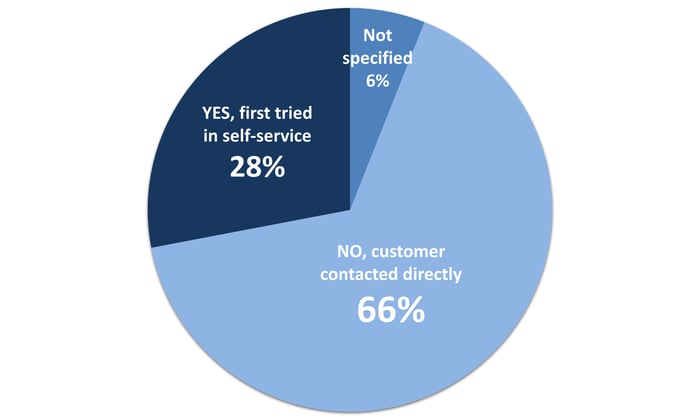
A link between the survey data and the request structure shows considerable differences between the various concerns. In the top 5 overview of the "blue" concerns, the differences are easily recognizable: While customers have a clear preference for clarification in a personal conversation with a service employee for account issues, customers seem to be more open to the self-service solution for budget billing adjustments.
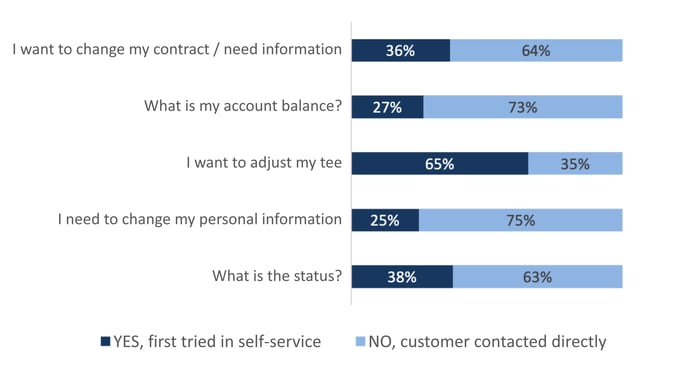
How can these digital gaps in the implementation of the service strategy be effectively closed? A deep understanding of the reasons why customers do not use self-service is a prerequisite for developing suitable activation strategies. Essential information about this can be obtained by asking the customer a second question:
"What were the reasons for not using our self-service for your current request?"
Example: The customers from our previous example responded to this question with the following distribution. This shows that personal attitudes and a lack of information are the main drivers for personal contact. In this case, the company has also blended the data with demographic customer data and customer classes in order to develop detailed activation strategies.
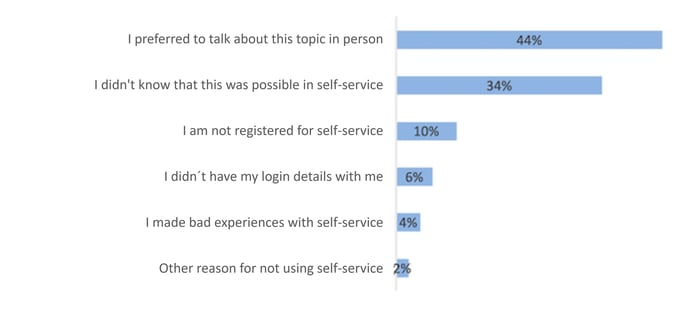
Companies can bring about a change in their customers' behavior towards more self-service use exclusively within the (on/offline) interactions in the customer lifecycle. A positive customer experience during portal registration and the associated (stock) stimulation for future use play a key role here. Based on a deep understanding of the customer, every interaction with the customer should be examined with regard to its suitability for self-service stimulation. In particular, direct, issue-specific stimulation should also be examined at the customer service touchpoint.
Scenario 2: When customers fail in self-service - complete and optimize the self-service offering quickly and effectively
We stay with our customer and his "blue" request. In contrast to scenario 1, he now tries to solve his specific problem himself using the self-service offerings in the digital channels. In doing so, the customer is acting entirely in line with the company's expectations and service strategy.
As they then immediately contact customer service with their request, it can be assumed that they have failed to use self-service. Or to put it more clearly: our customer was unable to resolve their issue using the means provided by the self-service and was forced to use another (second) channel.
The need for a second contact drives up service costs, although this is exactly what self services are supposed to avoid. In addition, this experience influences the customer's attitude towards self-service and significantly reduces the likelihood that they will use self-service again the next time they make a request.
Right now, in the service discussion with our customer, is the ideal opportunity to understand why our customer has failed in self-service and to eliminate the causes. These causes can be cross-request-related (accessibility and usability of the self-service applications) or request-specific (findability, comprehensibility, completeness and relevance of the content for the specific request solution).
So we ask the customer in the service contact (in the context of their request solution):
"Please give me a brief description of where you got stuck in our self-service."
Here, the answers should be closely aligned with the company's self-service offering.
Example: An insurer revealed considerable usability weaknesses, which were responsible for over a third of self-service abandonments. By recording these weaknesses in detail, they can be pinpointed and optimization measures can be implemented.
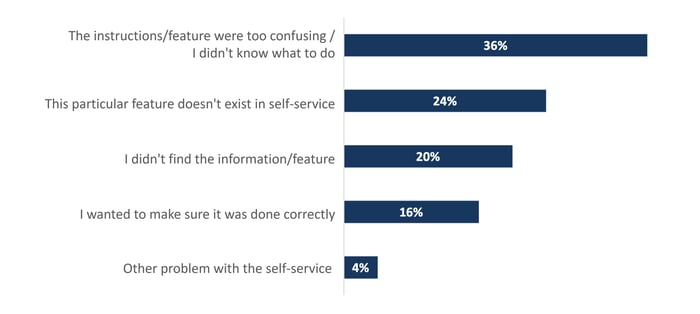
Another quarter of abandonments are due to missing functions. Here, self-service is not prepared for the concerns of these customers. There is a gap between supply and demand that needs to be closed. A precise breakdown of these 24% according to concerns is the basis for a targeted completion of the self-service offering.
How WOCAS® helps you to optimize your self-service
With WOCAS®, you can easily integrate the self-service questions into the recording of customer intents. The questions are only displayed for the employee if the intent is actually suitable for mapping in Self Service.
This allows you to evaluate for each intent why customers did not use the self-service or what specifically caused them to fail when using it. You can see exactly where you can better guide customers to Self Service and which Self Service functions need to be further improved in order to avoid follow-up contacts in the call center.
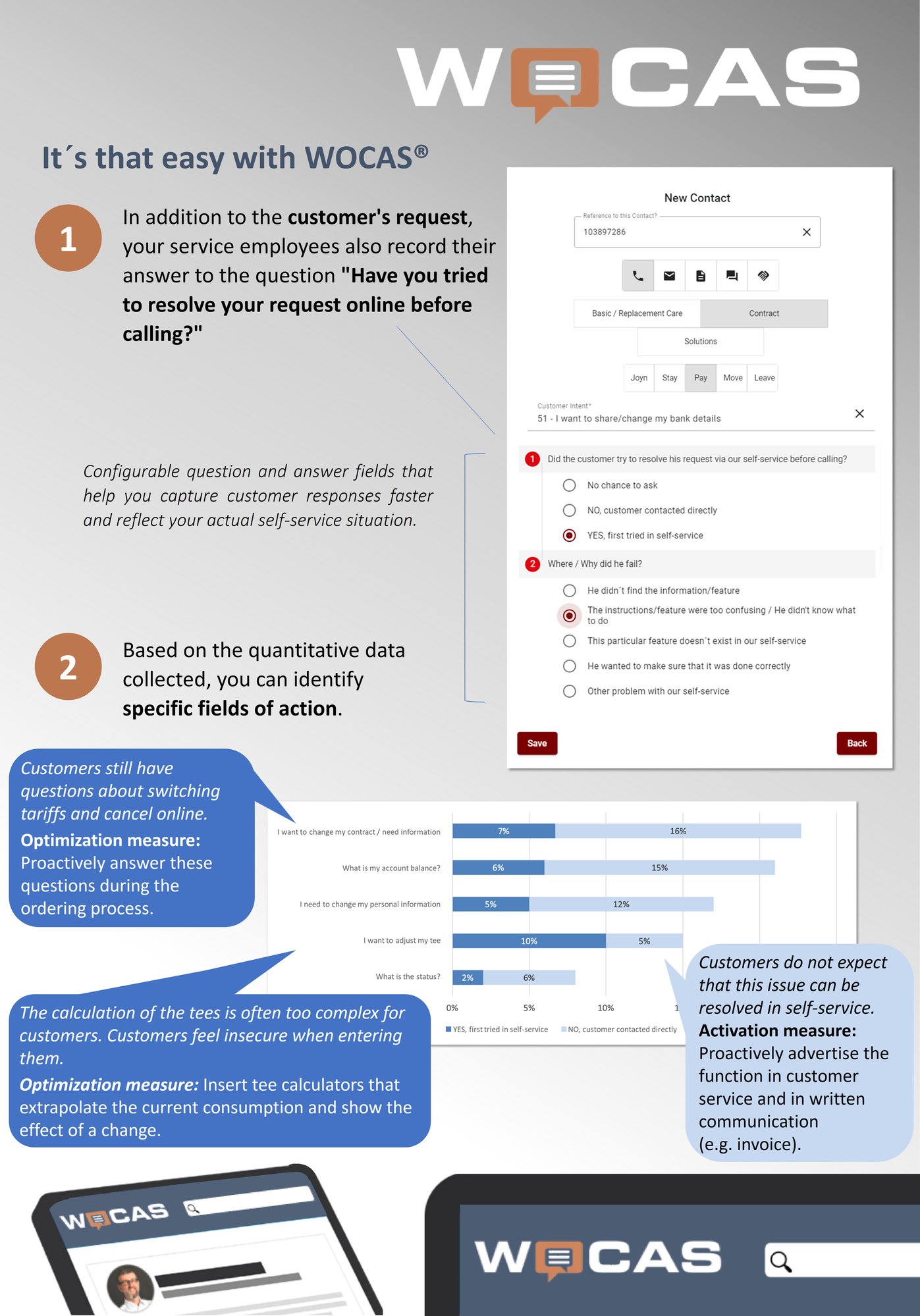
Feedback
We would be very glad to receive likes and comments or if you share our practice tip to make it accessible to other interested parties. You can do this by following our LinkedIn company page.
Want to talk to us? - Great!
We look forward to hearing about your challenges in a non-committal conversation and finding out together how WOCAS can help you.
